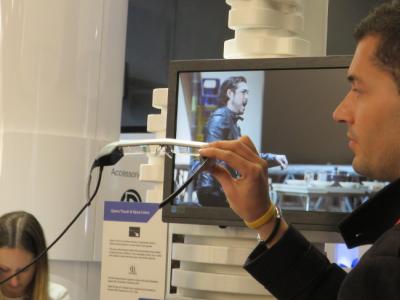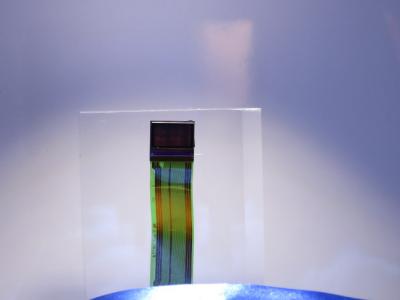Epson launched its latest augmented reality headset, the Moverio BT-300, at the Mobile World Congress last week. The main update in that version is the OLED microdisplay - which replaces the old LCD one.
The OLED is a 0.43" microdisplay-on-silicon that features a resolution of 720p, a brightness of 1,200 nits and a contrast of 100,000:1. Other features include an integrated 5mp camera and an Android 5.1 wired control-box that is based on a quad-core (1.44Ghz) Atom X5 chipset.
I tested the BT-300, and it really offers a great experience. The bright and high-contrast OLED is visible even against quite bright backgrounds and Epson discusses several compelling applications (in industry, medical and other fields). After wearing the device, you can easily imagine many scenarios in which such a device can be both useful and enjoyable.

The BT-300 will ship towards the end of 2016, and Epson says the price will be around $700 - $800. Pre-registration started during the conference and Epson is looking for partners to develop the applications for this headset.
Epson says it is producing the OLED microdisplays itself... but I'm not sure if this is really the case as it is possible that Epson developed the display in-house, in collaboration with a microdisplay maker (such as eMagin, Sony or MicroOLED) which is also a production partner. In any case, I am not familiar with any existing off-the-shelf OLED microdisplay that fits those specs.

Epson has been involved with OLEDs for many years - mostly though in ink jet printing technologies. The company did have a small Gen-2 OLED fab that was used to create prototypes back in 2008, so it may be possible that this line is now used to make those microdisplays.

